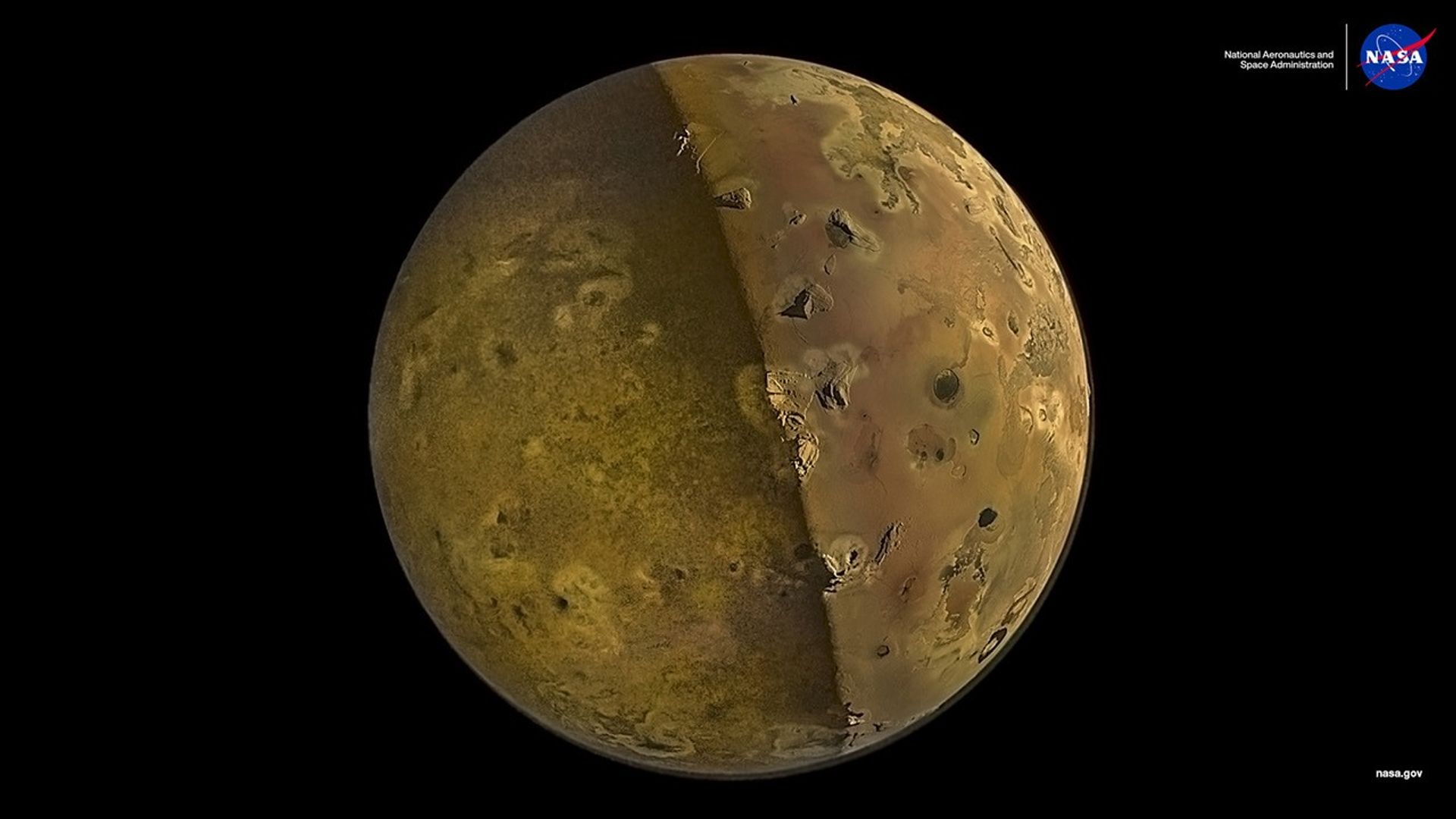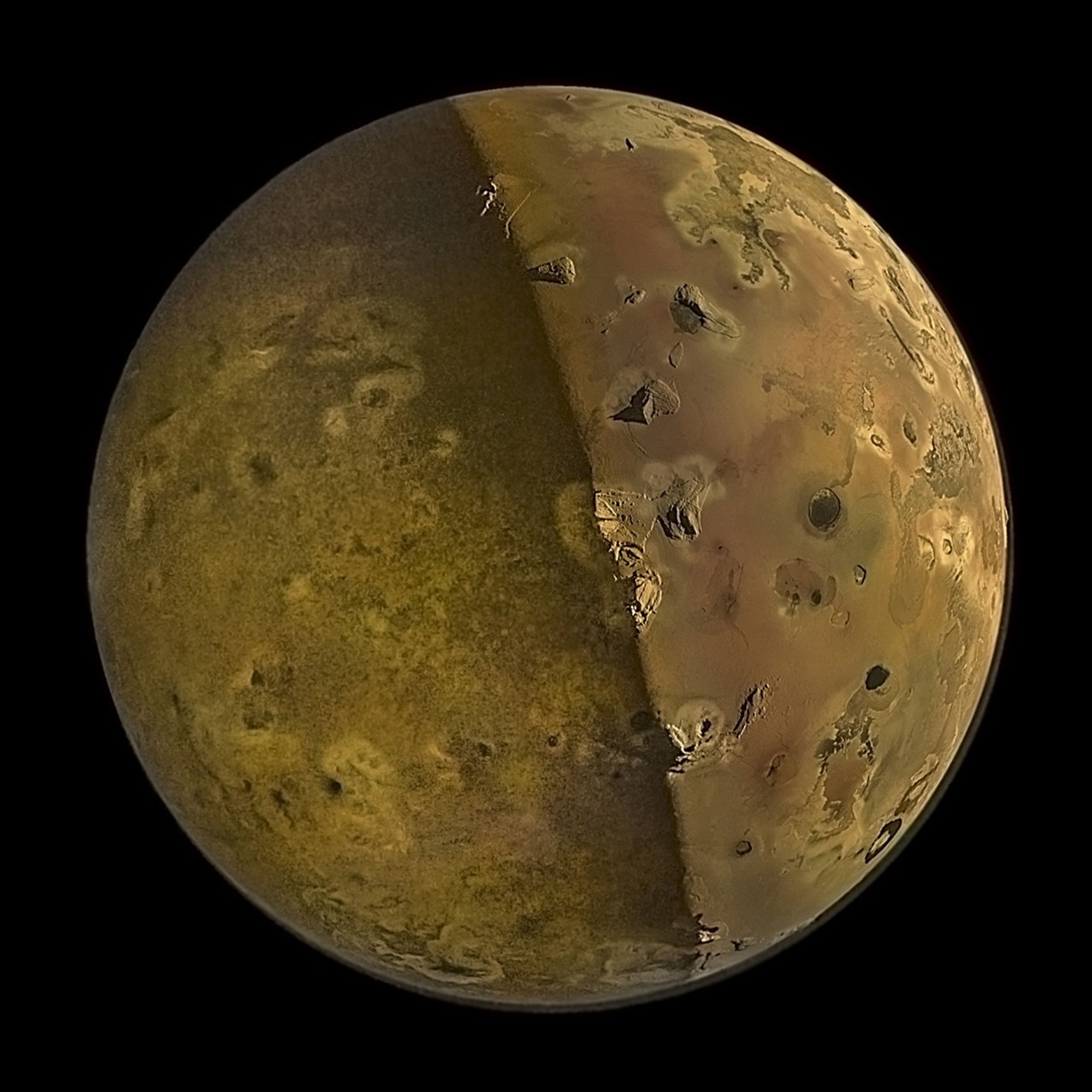Explore with us
October 2025 Image
Learn about October's amazing image. Explore related topics, activities, games, and download desktop wallpaper.
Jupiter’s Volcanic Moon Io
-
During its close flyby of Jupiter’s moon Io on December 30, 2023, NASA’s Juno spacecraft captured some of the most detailed imagery ever of Io’s volcanic surface. In this image, taken by the JunoCam instrument from about 930 miles (1,500 kilometers) above the moon, Io’s night side [left lobe] is illuminated by “Jupitershine,” which is sunlight reflected from the planet’s surface.
Image and text credit: NASA/Jet Propulsion Laboratory–Caltech/Southwest Research Institute (SwRI)/Malin Space Science Systems (MSSS). Image processing: Emma Wälimäki © CC BYLearn more about processing the sharpest images of Io in a generation

You can do planetary science!
-
Volunteer individuals or organizations from anywhere and with any amount of scientific background help complete NASA planetary research in myriad ways, including building radio telescopes, writing software, creating mission-based artwork, translating project materials into other languages, engaging in research at observatories, and writing (and winning) telescope use proposals.
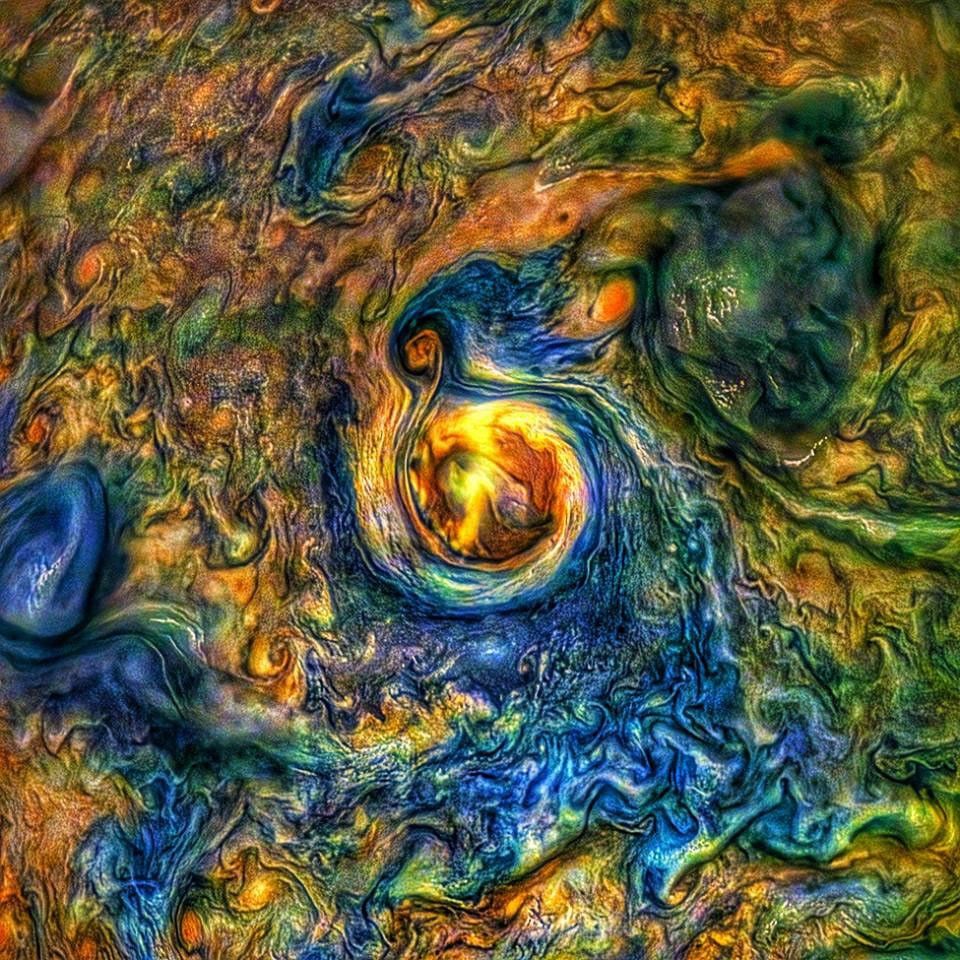 PIA24295Image data: NASA/JPL-Caltech/SwRI/MSSS, Image processing: Gerald Eichstädt / Sean Dorán / MEO © CC NC SA
PIA24295Image data: NASA/JPL-Caltech/SwRI/MSSS, Image processing: Gerald Eichstädt / Sean Dorán / MEO © CC NC SA
Discover More about Jupiter's Moon Io
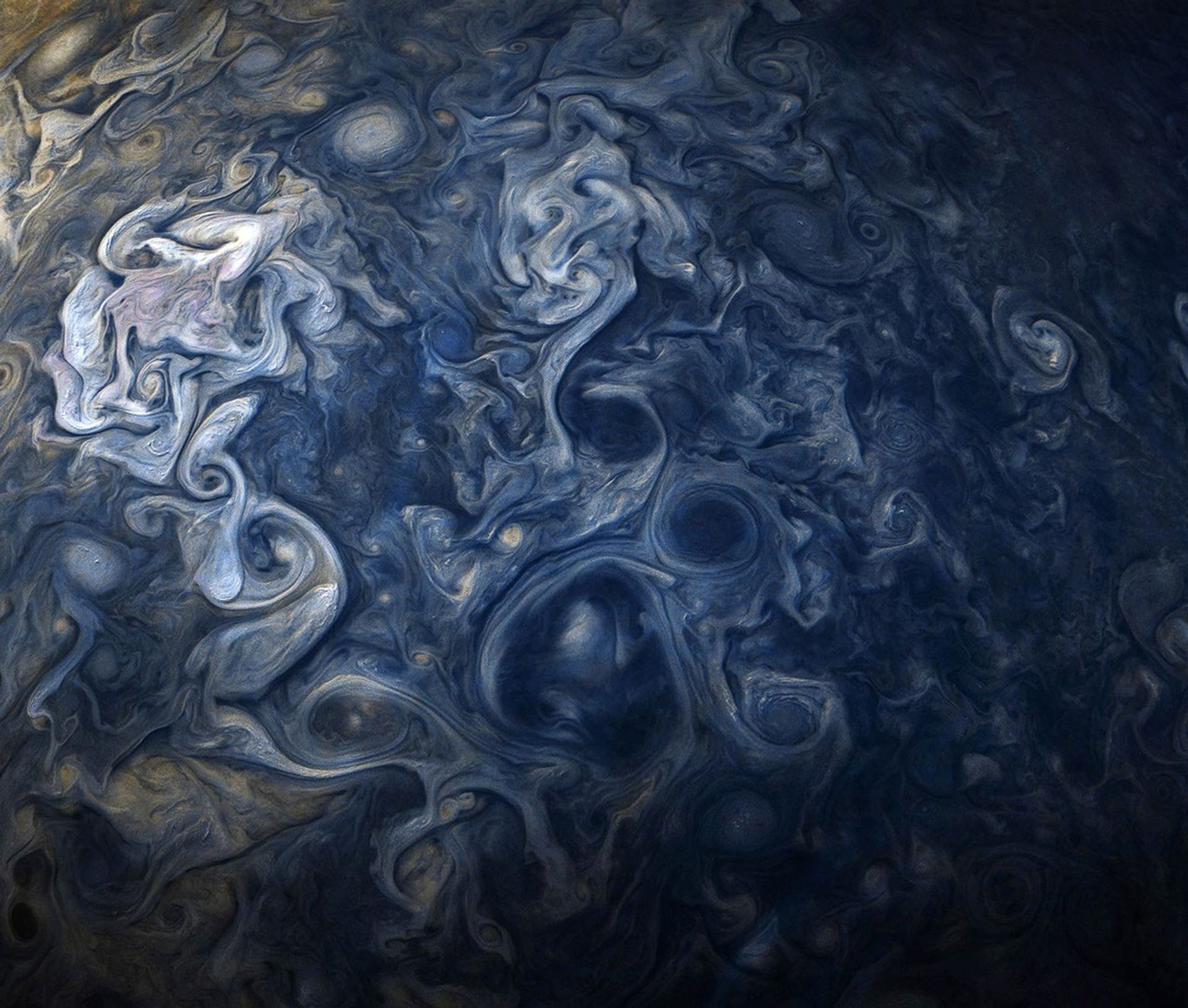
Citizen Science: JunoCam
This month's calendar image was processed by a member of the JunoCam Citizen Science project. Click below to find out how you can join.
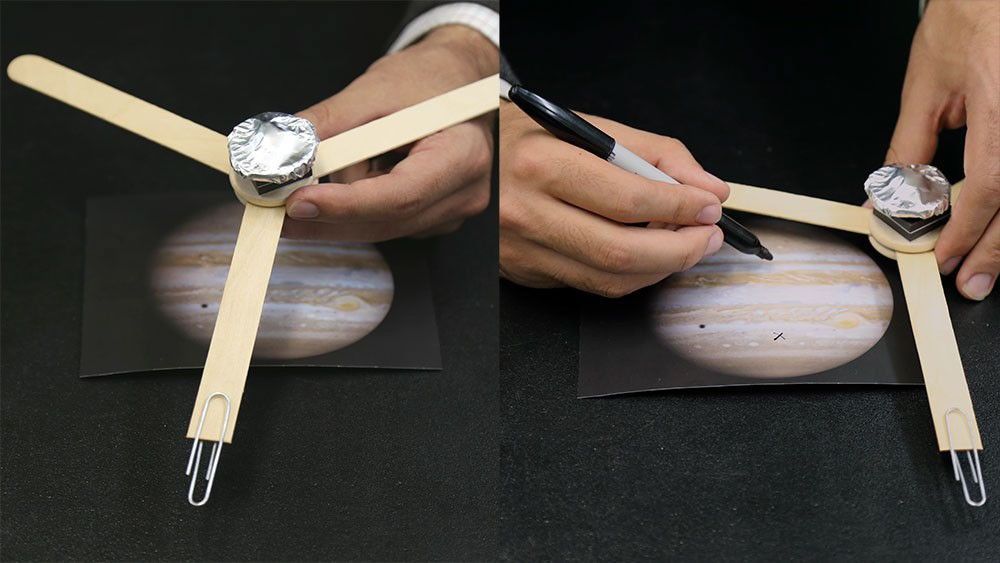
Make a Jupiter Orbiter
With a few simple items, you can make a Jupiter spacecraft, complete with "magnetometer."
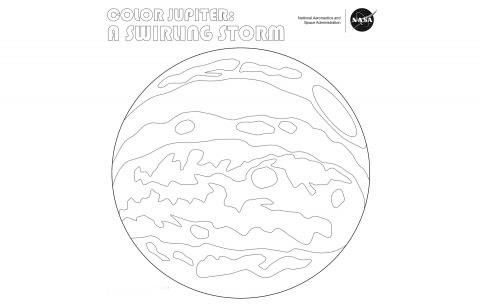
Coloring Jupiter
Download Jupiter coloring pages and share your vision of its swirling storms and clouds.
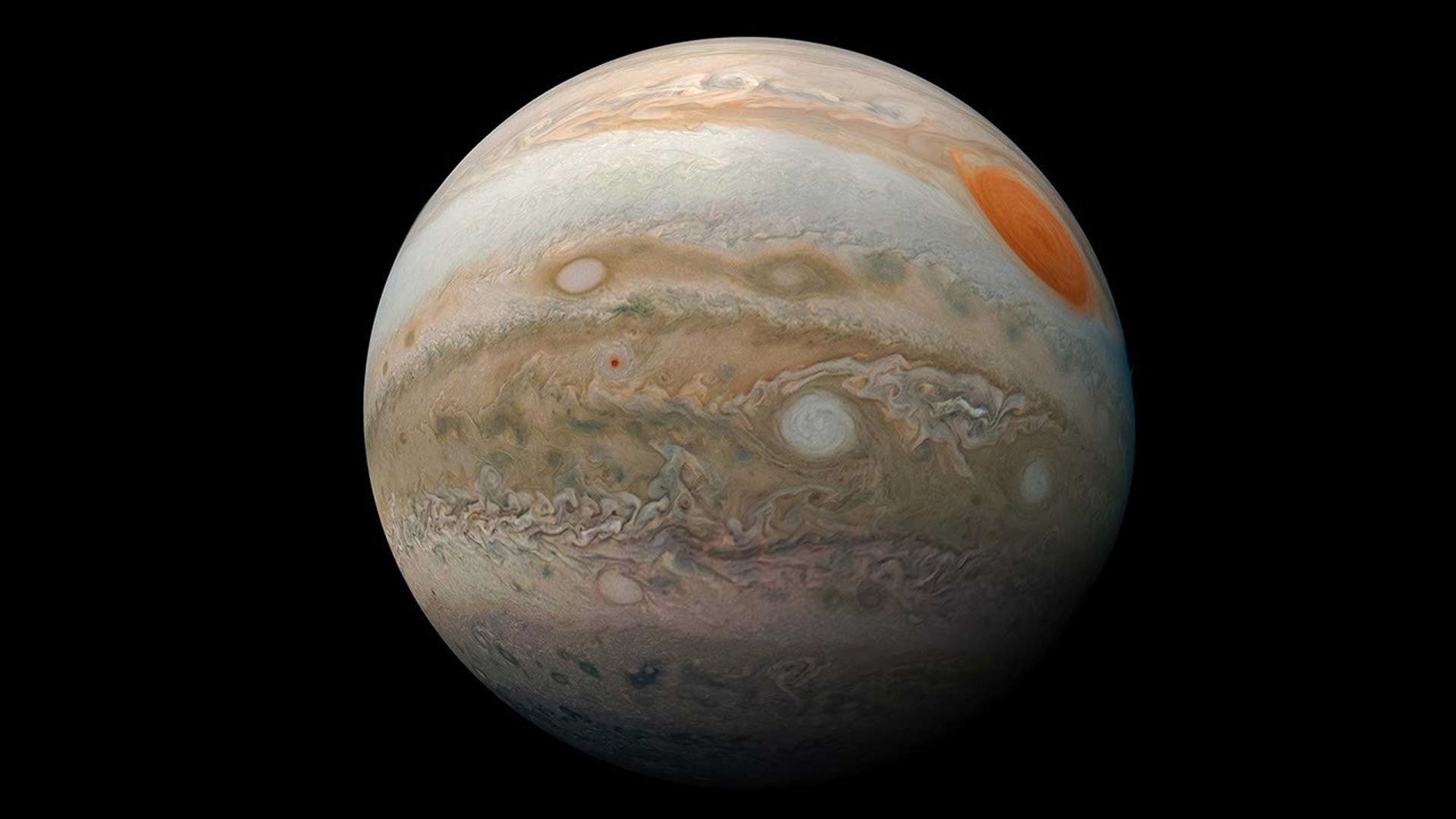
Jupiter Resources
A curated collection of resources, including activities, videos, animations, posters, and online interactives.
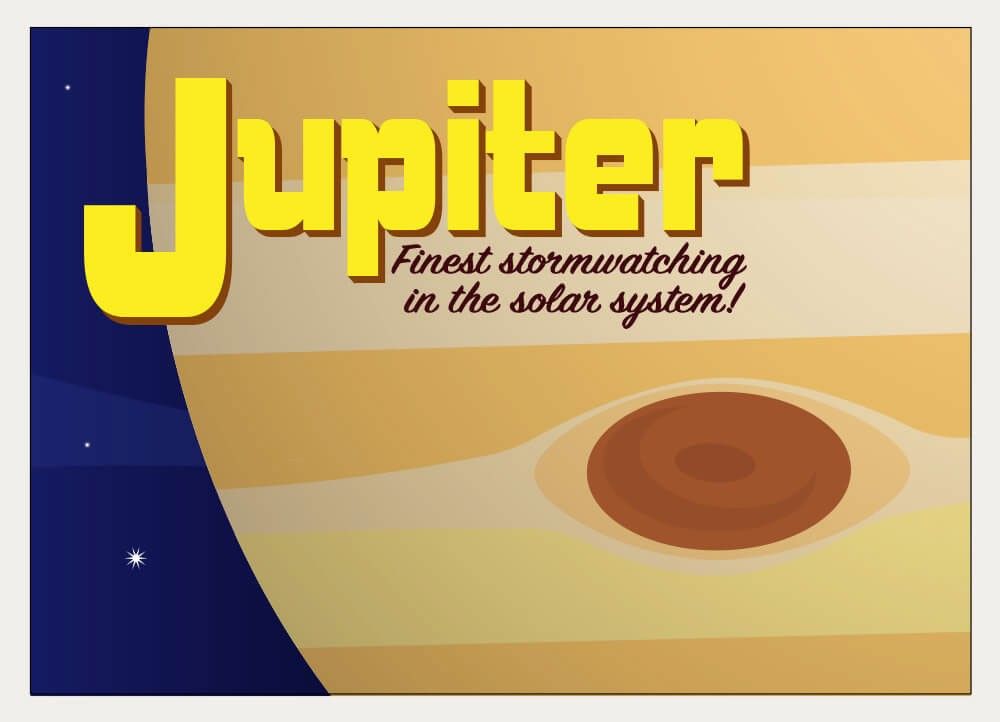
Space Place: Jupiter
Designed for younger learners, Space Place has fun facts, activities and games about Jupiter and our solar system.
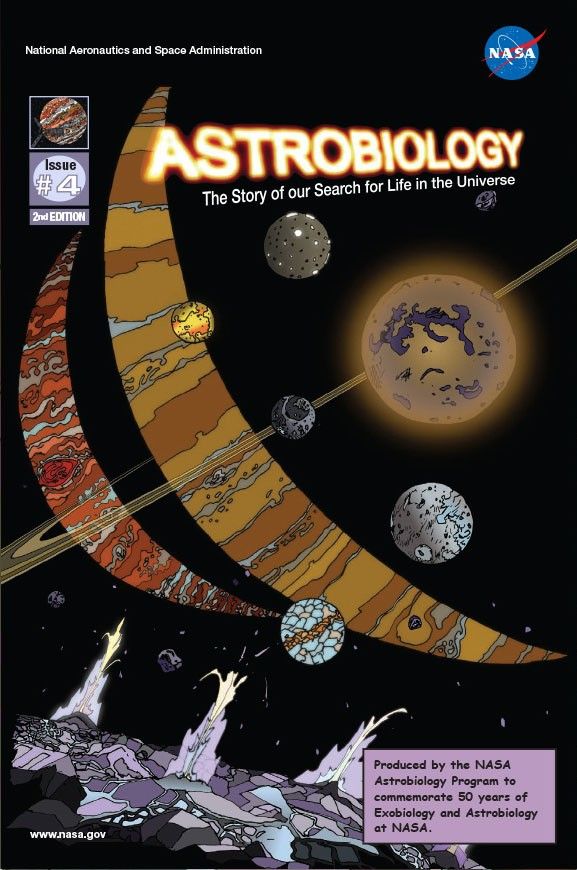
Astrobiology: Graphic Novels
This series of graphic novels focuses on the search for life and habitability in our solar system, much like what Europa Clipper will do.
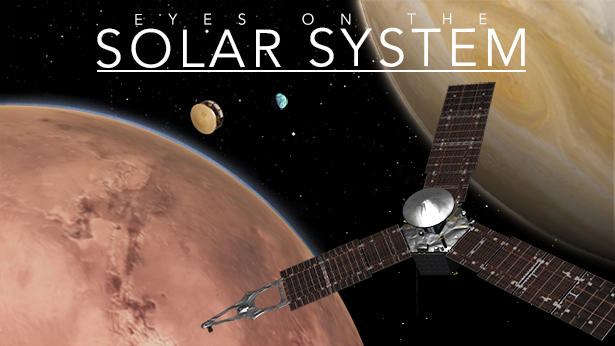
NASA Eyes on the Solar System
Find NASA spacecraft, including Juno and Europa Clipper, in real time in space with this 3D interactive, desktop app.
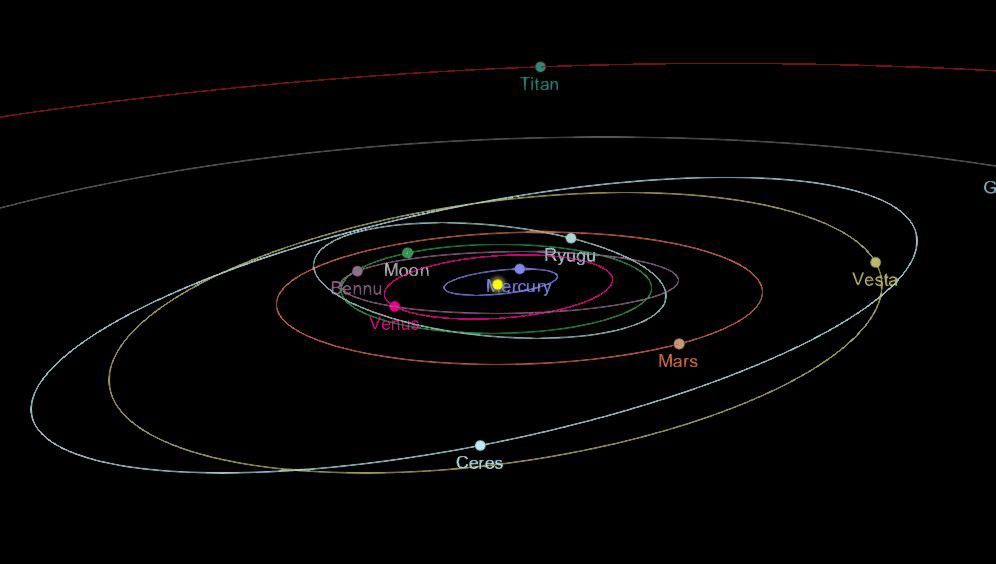
Solar System Treks
Trek across Io and other celestial bodies with this interactive, 3D app.
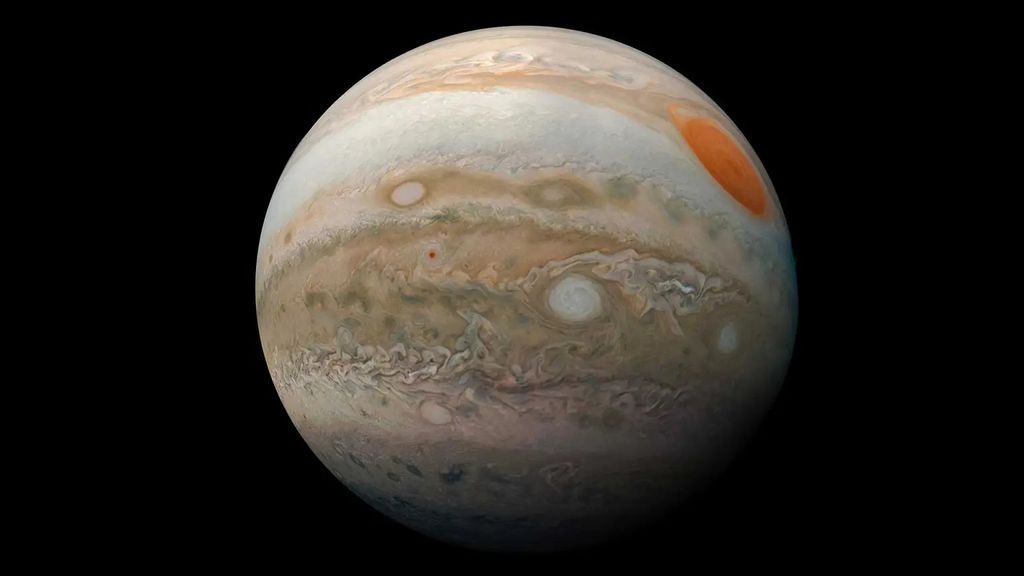
Jupiter Facts
Jupiter is the fifth planet from the Sun and the largest in the solar system, more than twice as massive as the other planets combined.
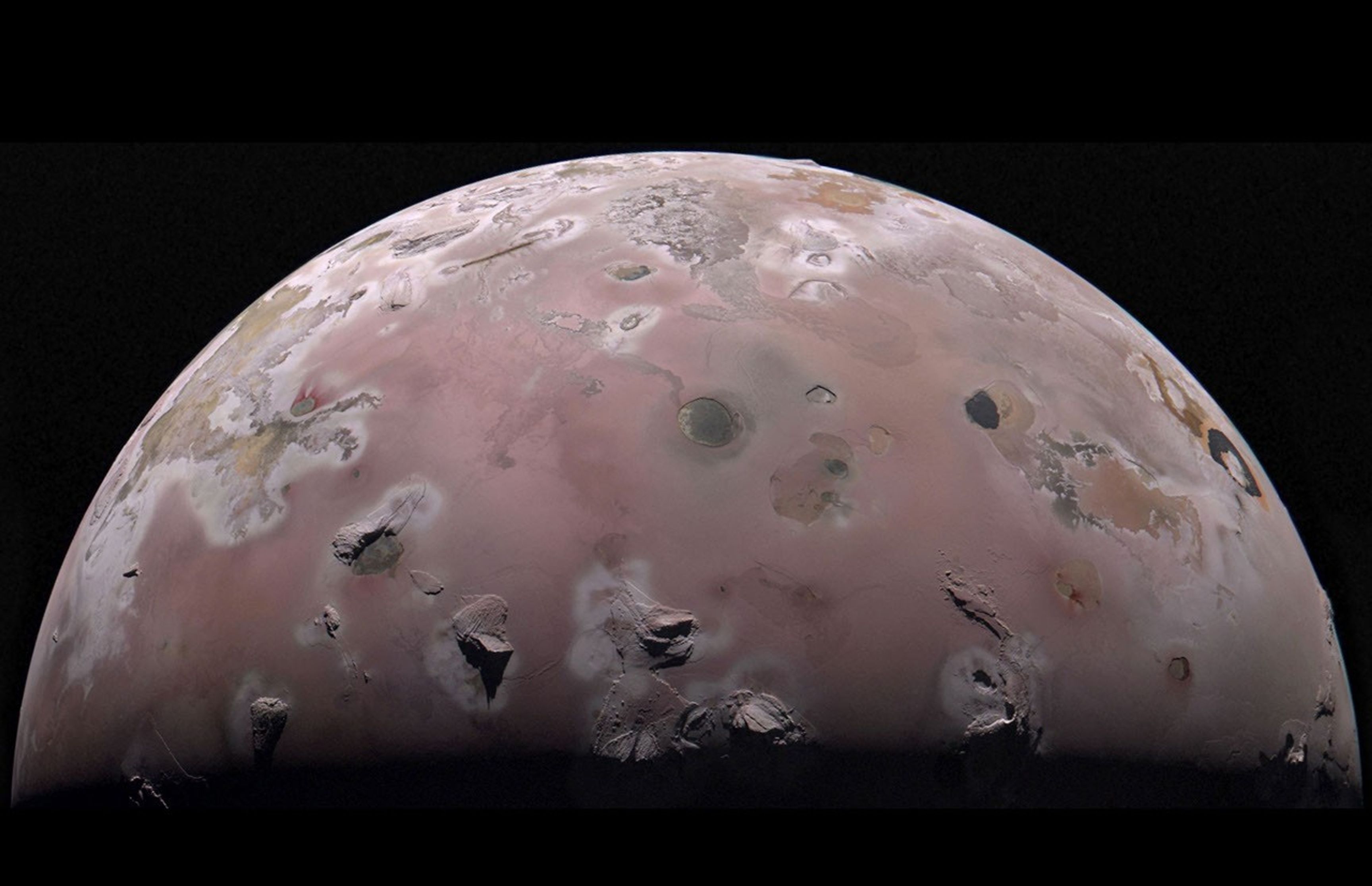
Io and the moons of Jupiter
Io is just one of the 95 moons and countless other small objects in Jupiter's oribit. Jupiter's four largest moons -- Ganymede, Callisto, Io, and Europa -- were the first moons discovered beyond Earth's Moon.
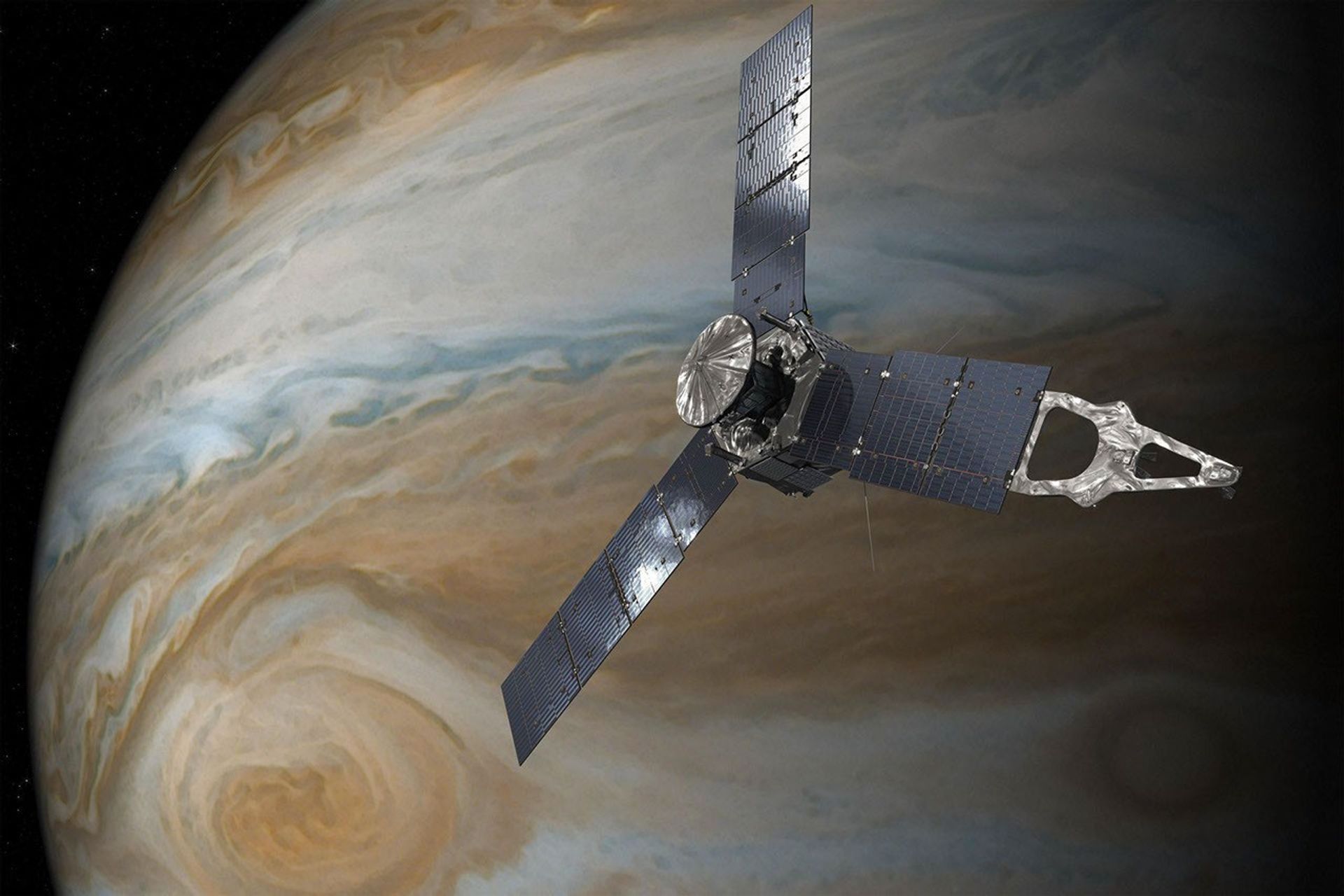
Juno's mission to Jupiter
After 1.7 billion-mile journey from Earth, evading showers of the most punishing radiation outside the Sun, Juno has provided breathtaking images and breakthrough discoveries from Jupiter and its moons.
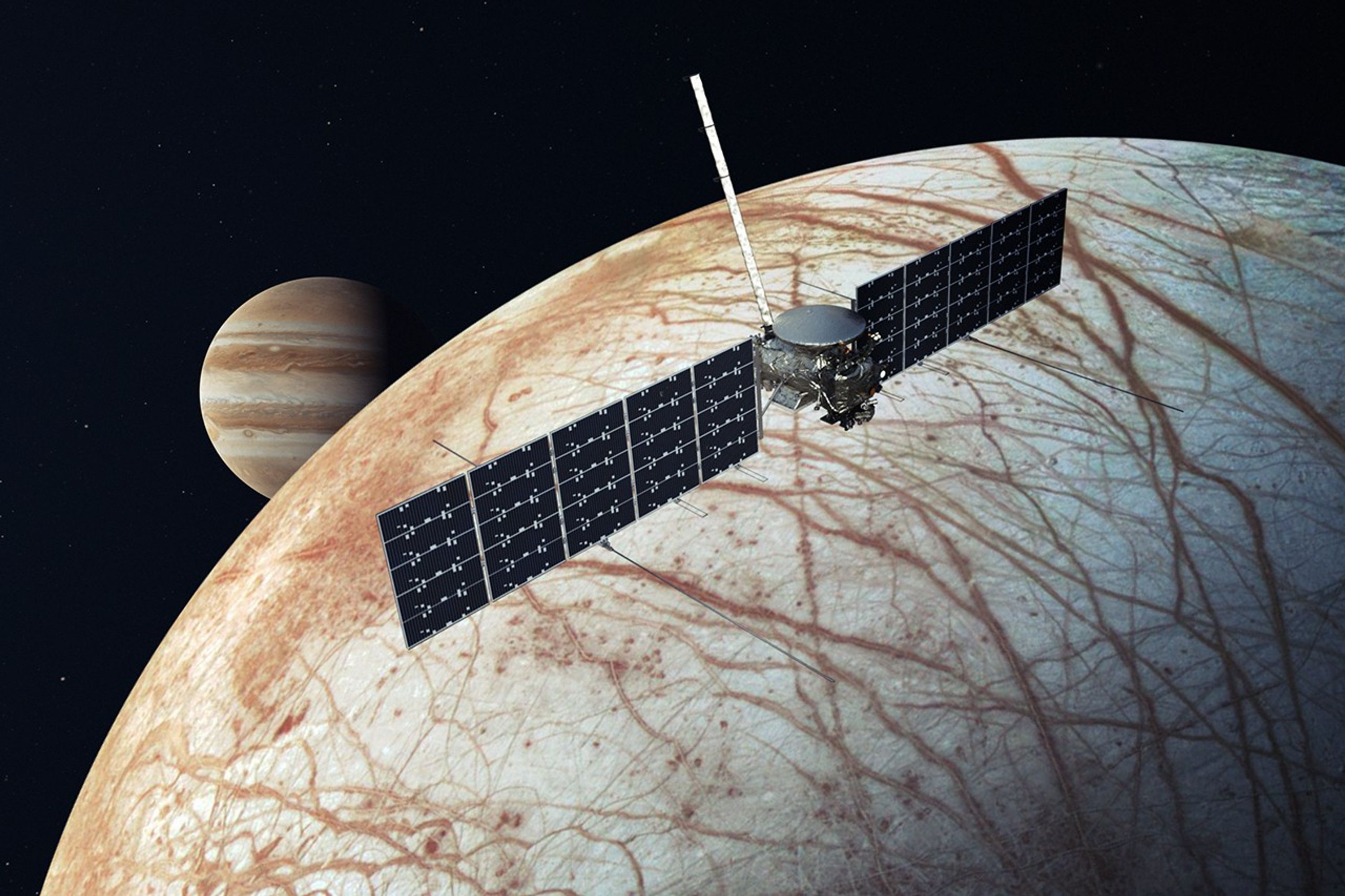
Europa Clipper mission to Europa
When it arrives in 2030, Europa Clipper will study the vast ocean and rocky bottom beneath that moon's icy crust, searching for signs of habitability.
Take an animated tour of Io
This animated tour of Jupiter's moon Io, produced using data from NASA's Juno mission, features volcanic plumes, a look at lava on the surface, and dissection showing Io's internal structure.
Watch on YouTube2025 NASA Science Calendar
Download our latest calendar and wallpaper backgrounds for your desktop or mobile device, and discover the fascinating science behind the images featured each month.
Download Options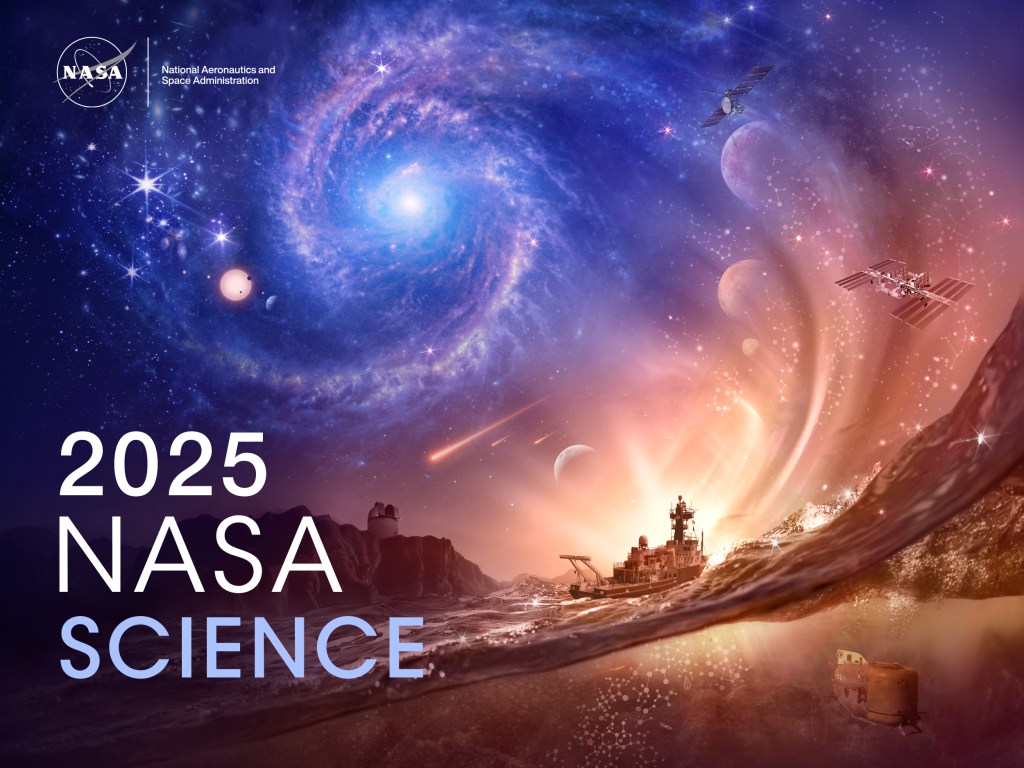
Explore our other featured images
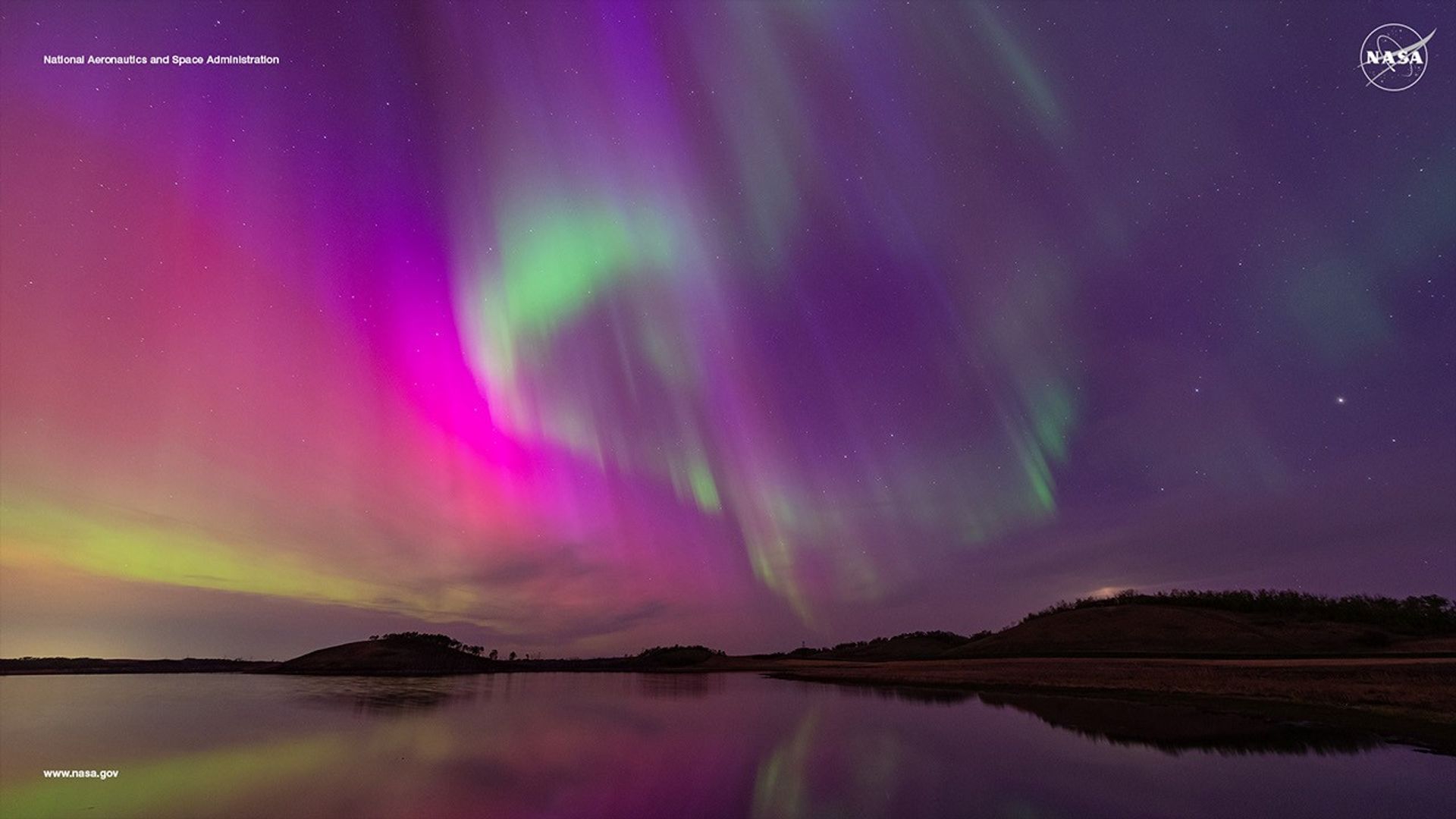
January 2025
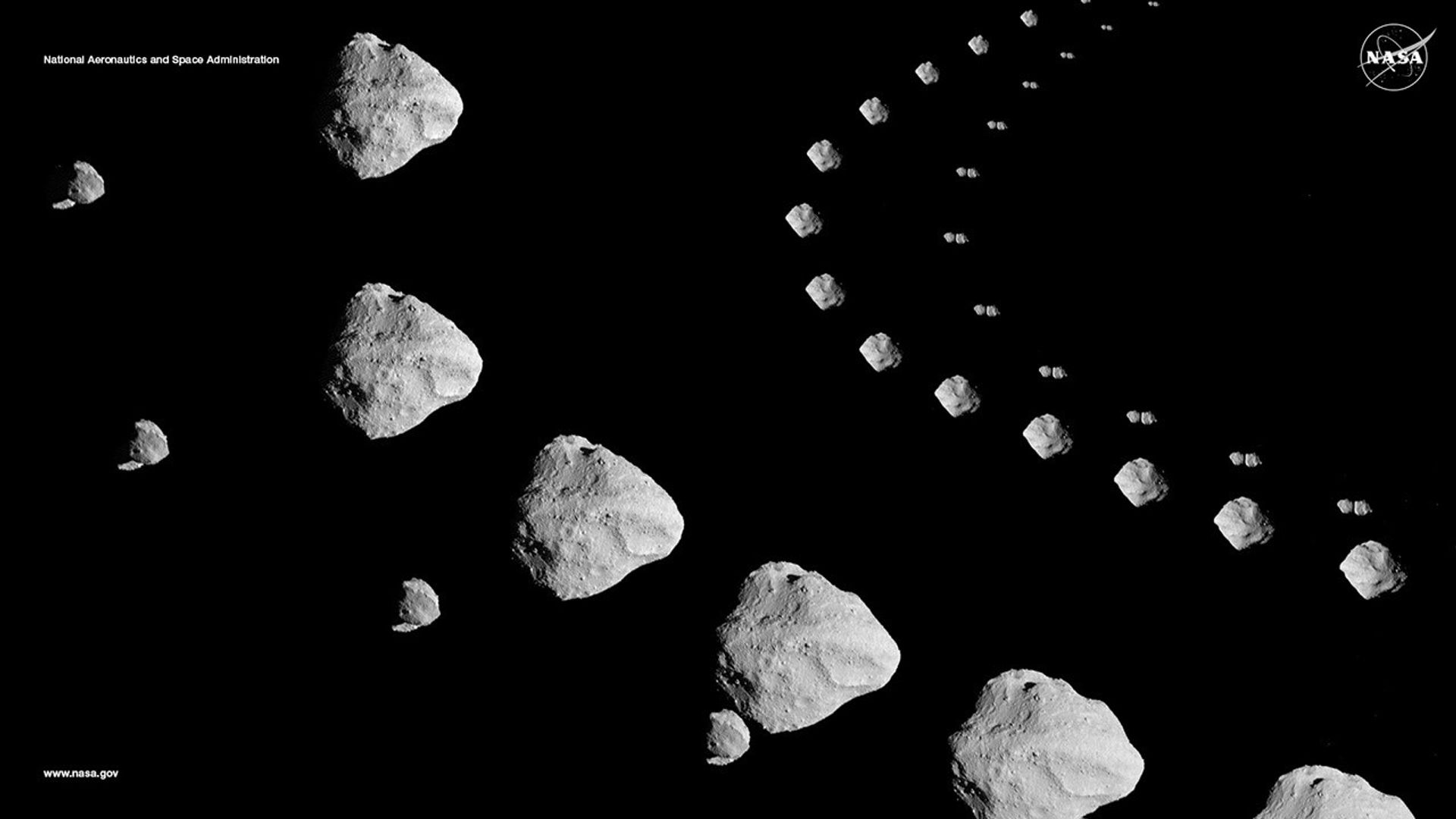
February 2025
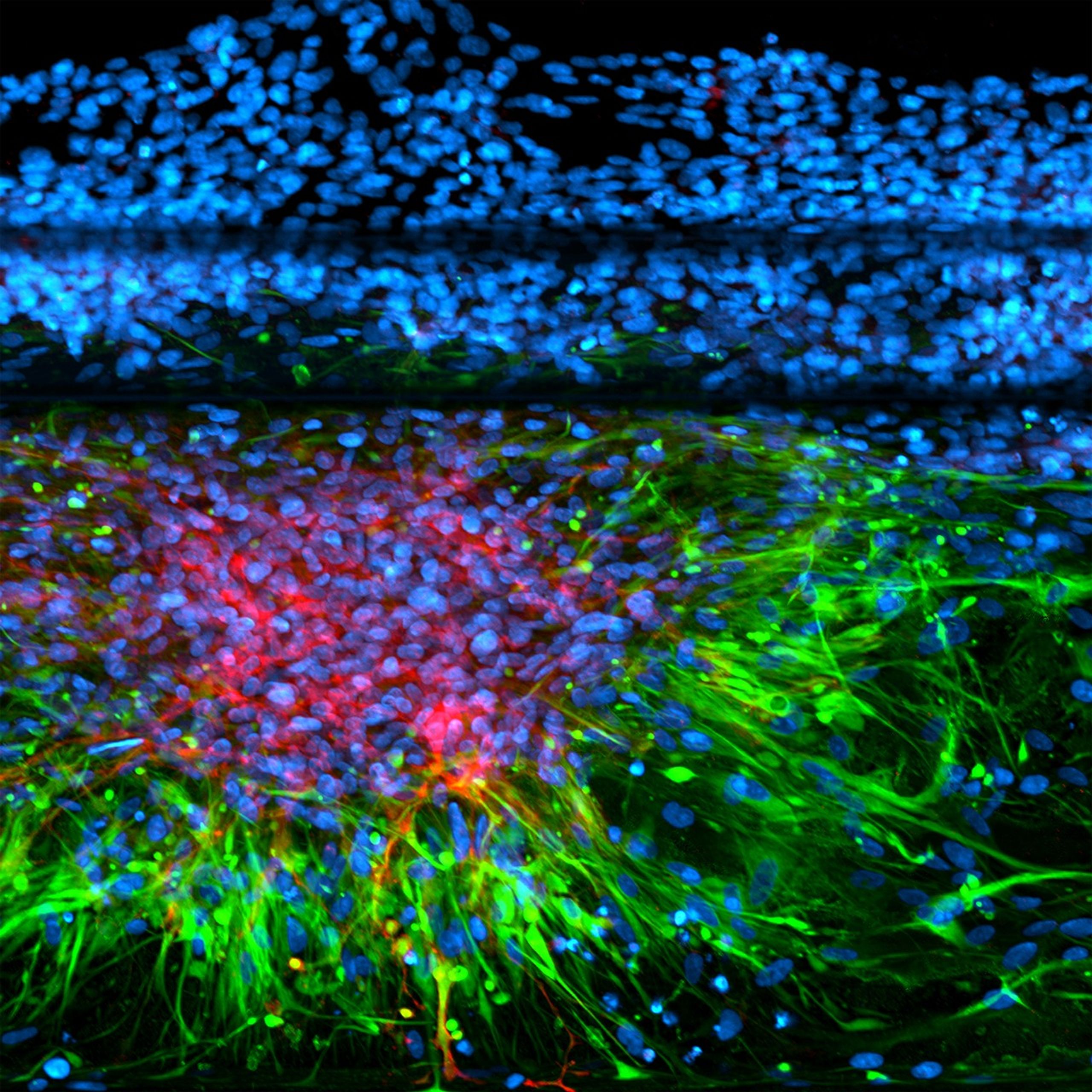
March 2025
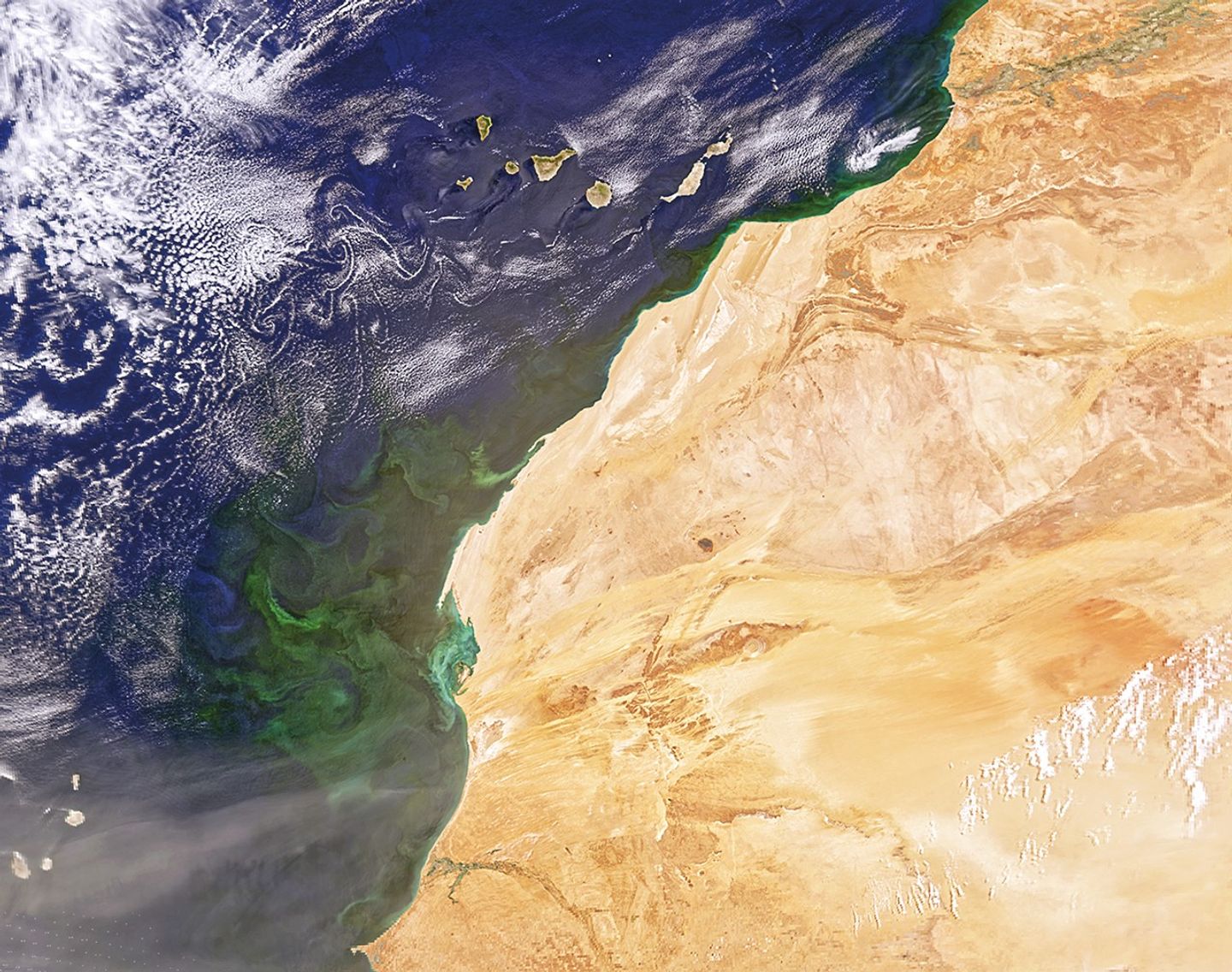
April 2025
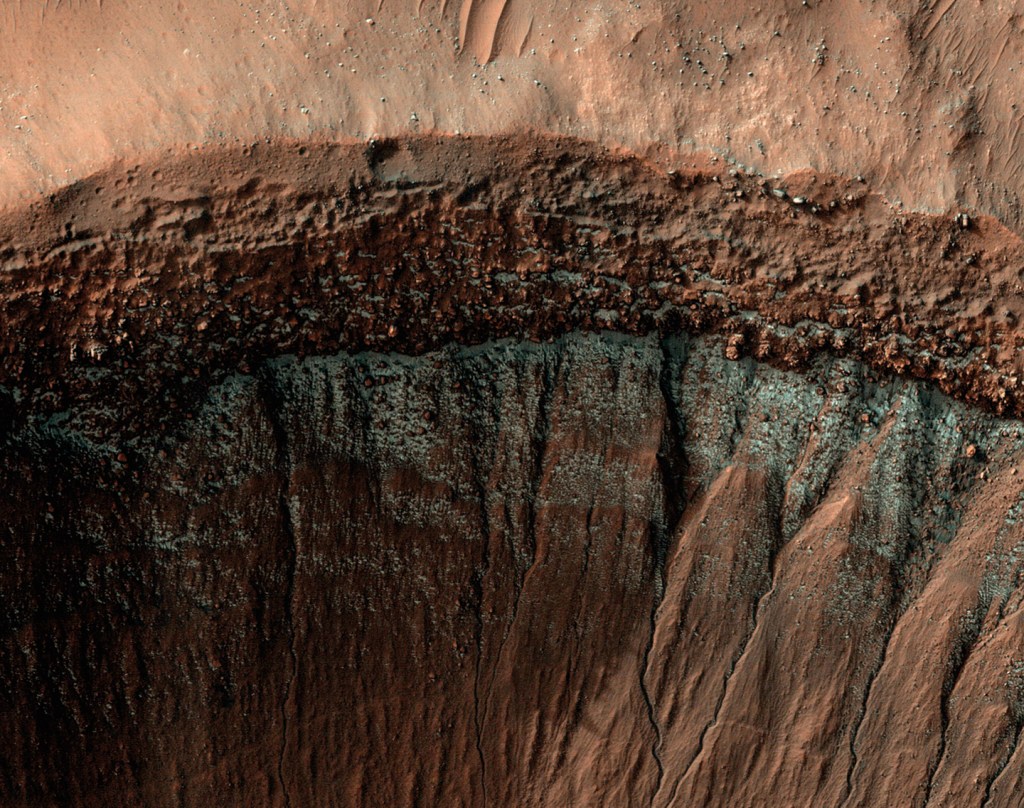
May 2025
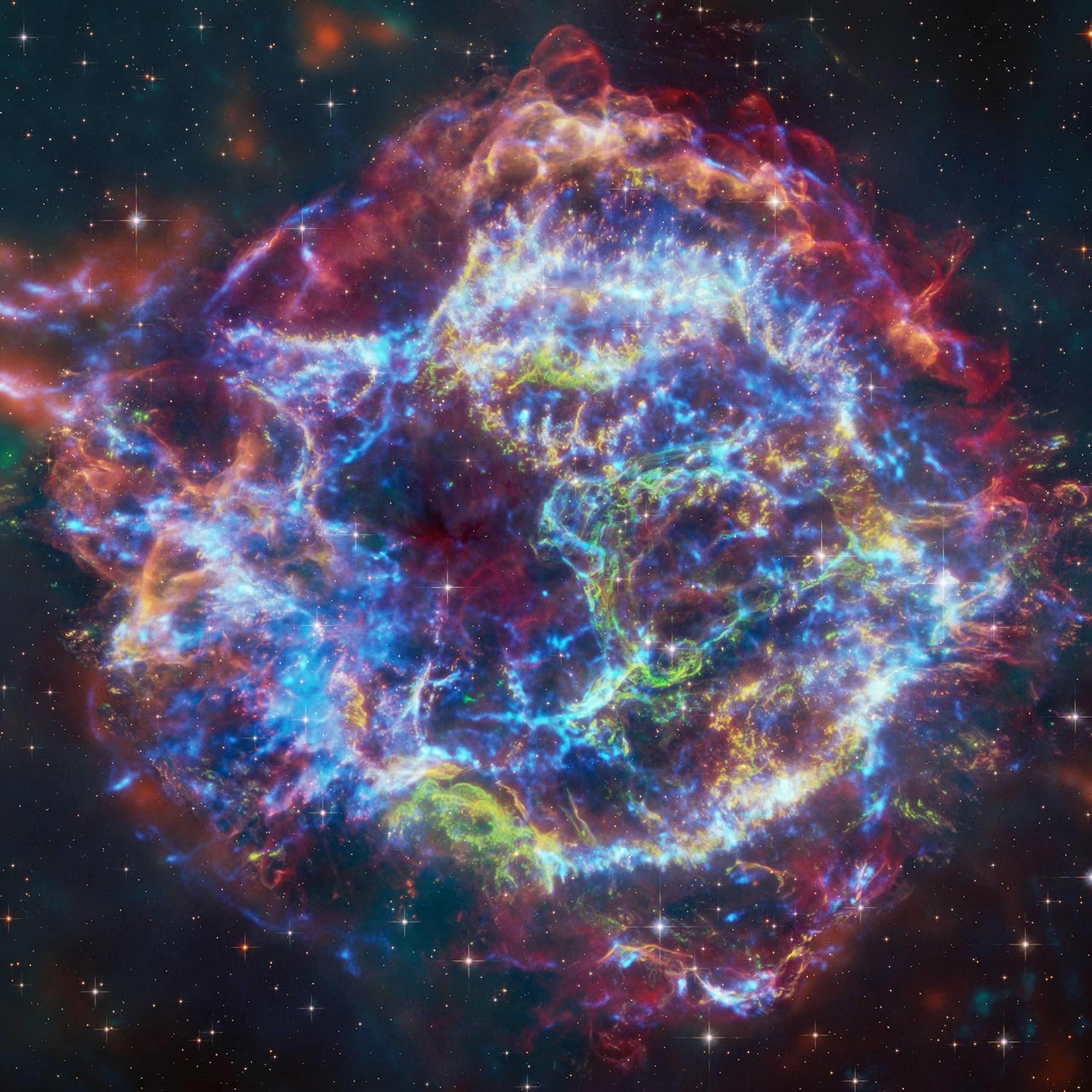
June 2025
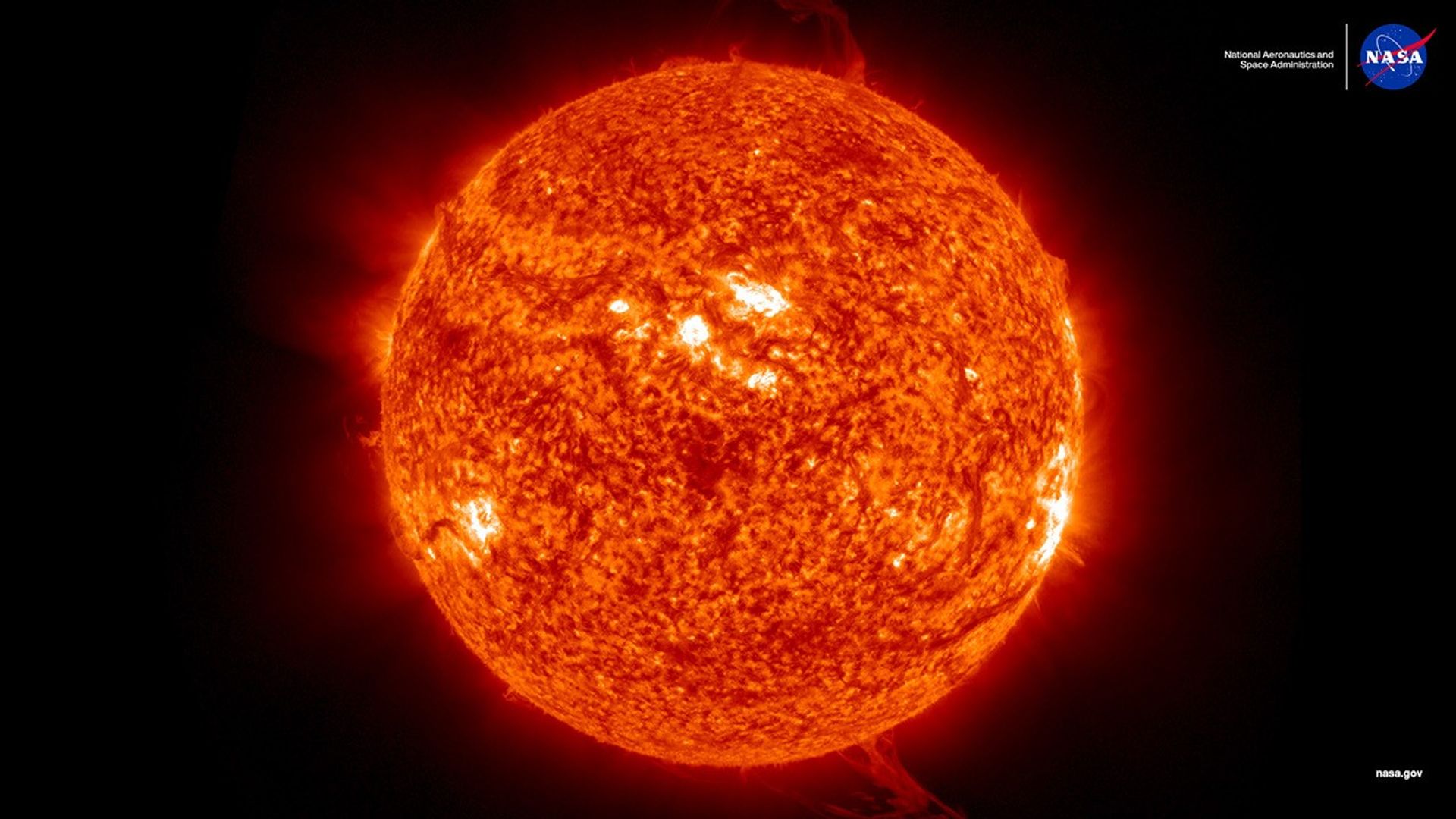
July 2025
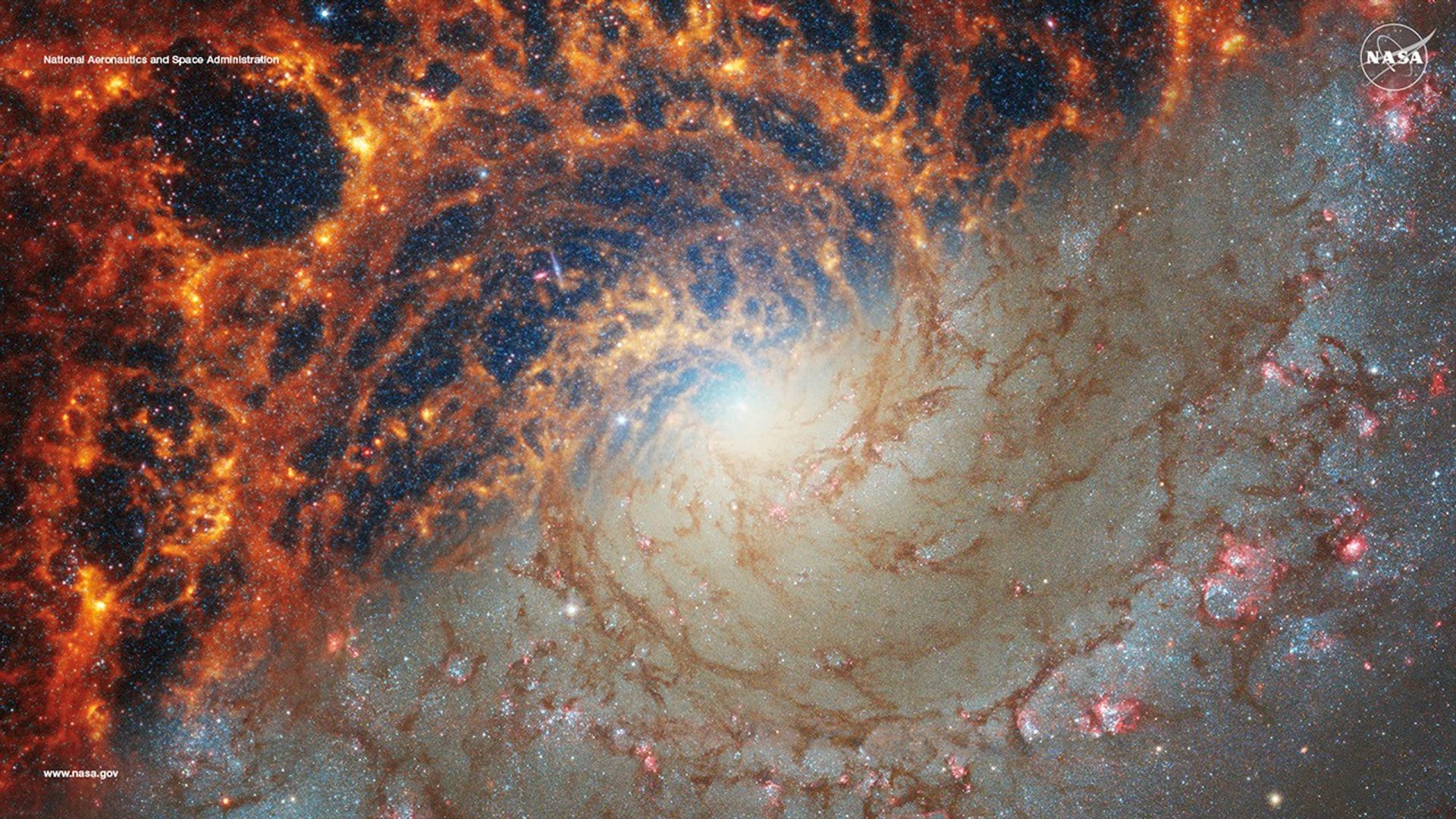
August 2025
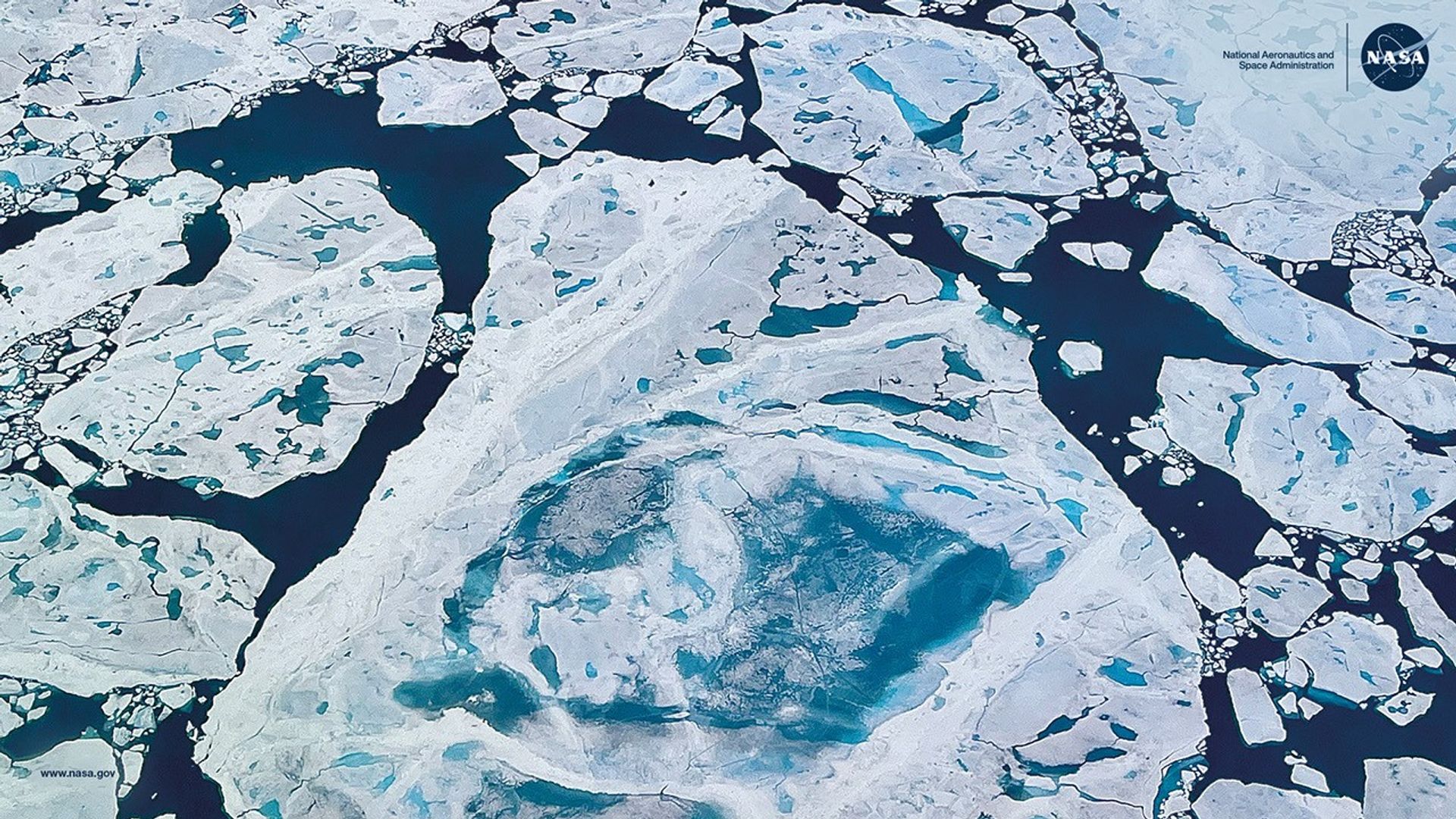
September 2025
